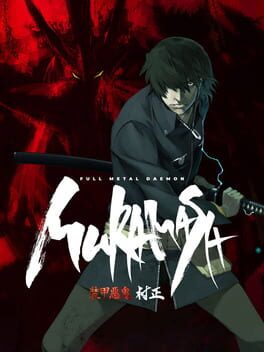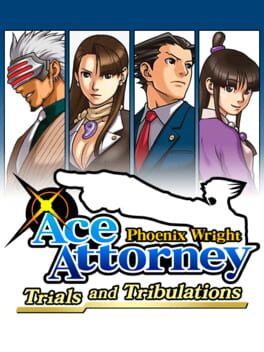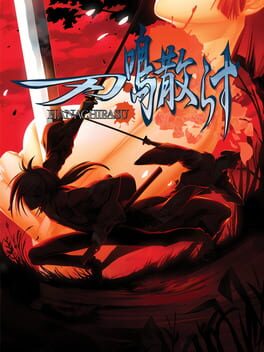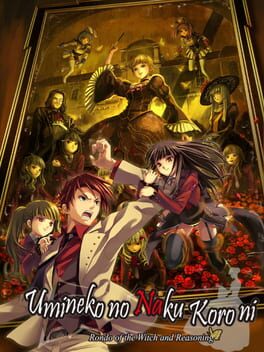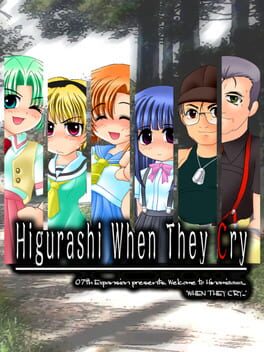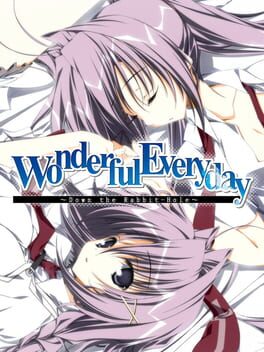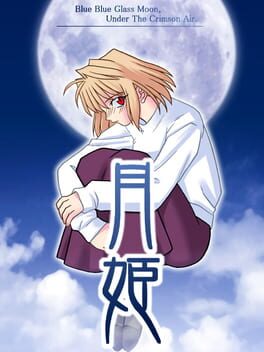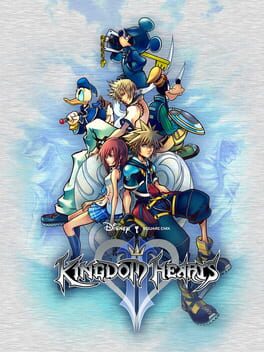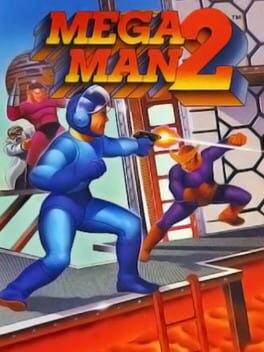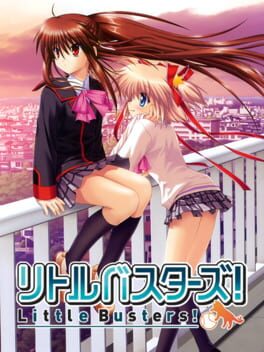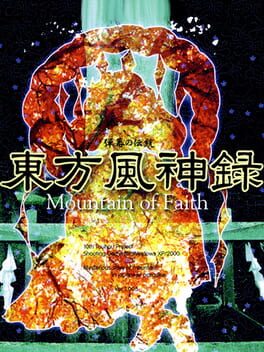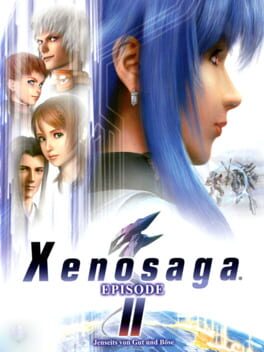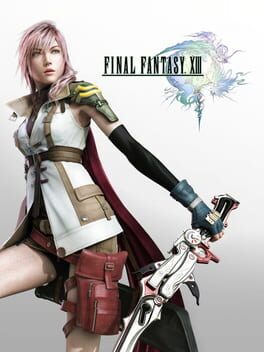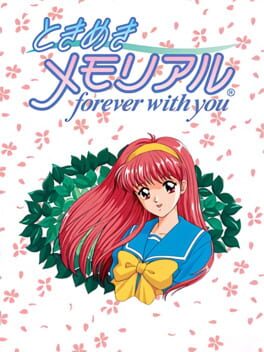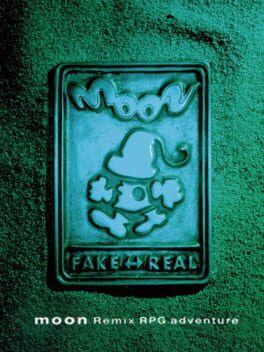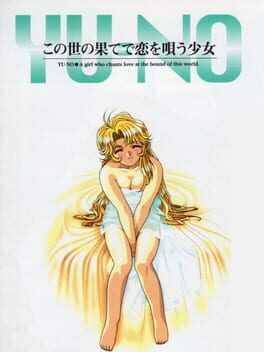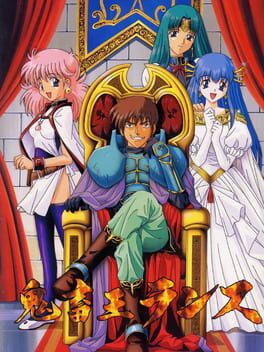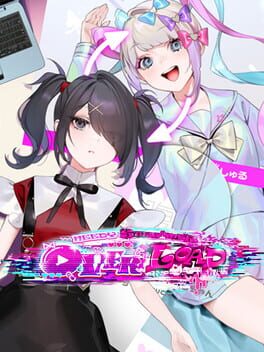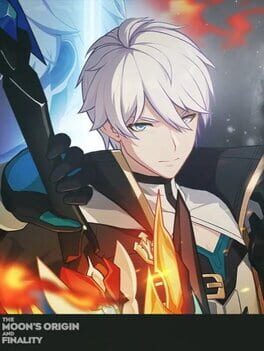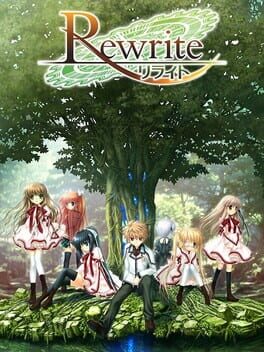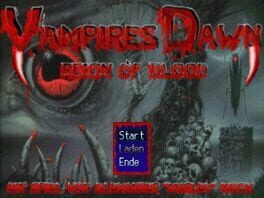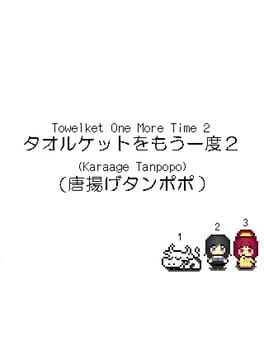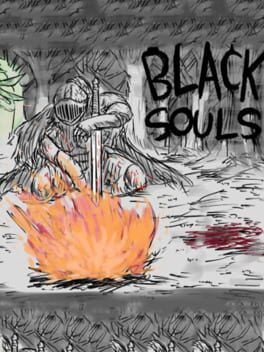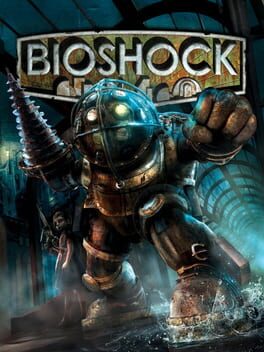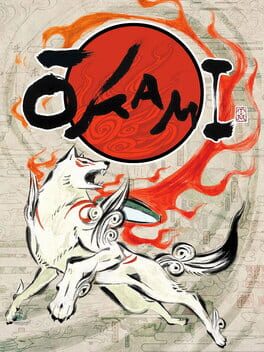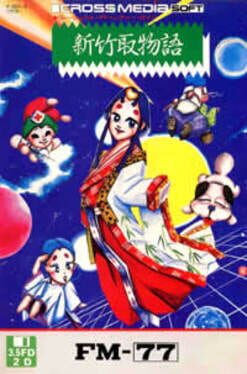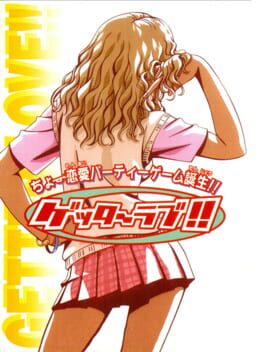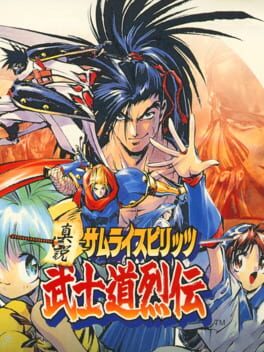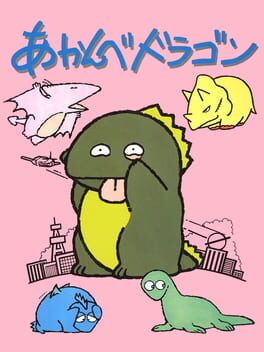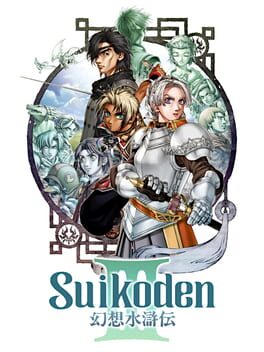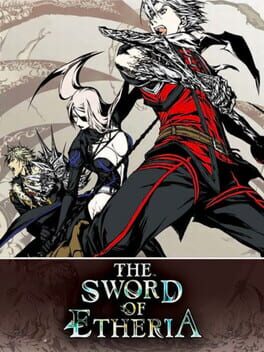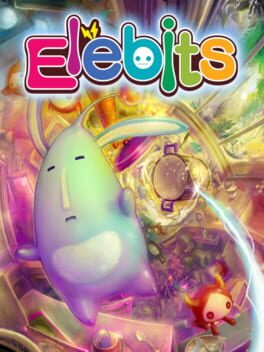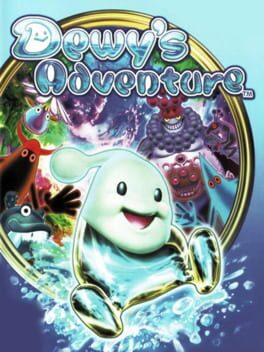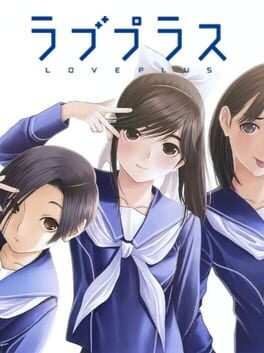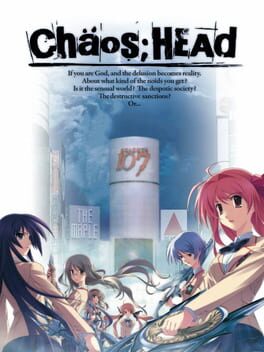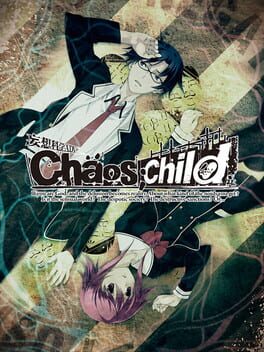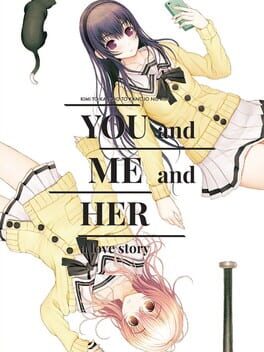263 reviews liked by Hitsu
Blue Archive
2021
Relogging this after finishing Vol F
Fucking Peak, it hit so fucking hard. Never have I thought I would have spent almost 16 hours straight on this one volume hooked and kept on playing even If I was tired. This game lets on more than what it actually is, and some people will actually give their honest opinion making it this far into this game which is Blue Archive actually being peak storytelling.
"Your life matters. Don't regret living.
There's nothing wrong with wanting to be happy.
Thinking the only way to end your suffering is through death is terrible.
You weren't born to suffer.
And you shouldn't.
No child should ever feel that way.
If your world is filled with more pain than happiness...
If you're wandering the world feeling like you don't belong in it...
That's not your fault.
It's the fault of the world you live in and the people responsible for it.
No one person should ever carry the entire weight of the world on their shoulders... especially not a child.
No matter how many horrible things you've done, no matter how many unforgivable offenses you've committed...
It should NEVER be that way.
It's not your responsibility.
That duty should fall to the adults in your life.
...I'll be the one to take responsibility."
RE Aoharu changed me. Thank You Blue Archive.
Fucking Peak, it hit so fucking hard. Never have I thought I would have spent almost 16 hours straight on this one volume hooked and kept on playing even If I was tired. This game lets on more than what it actually is, and some people will actually give their honest opinion making it this far into this game which is Blue Archive actually being peak storytelling.
"Your life matters. Don't regret living.
There's nothing wrong with wanting to be happy.
Thinking the only way to end your suffering is through death is terrible.
You weren't born to suffer.
And you shouldn't.
No child should ever feel that way.
If your world is filled with more pain than happiness...
If you're wandering the world feeling like you don't belong in it...
That's not your fault.
It's the fault of the world you live in and the people responsible for it.
No one person should ever carry the entire weight of the world on their shoulders... especially not a child.
No matter how many horrible things you've done, no matter how many unforgivable offenses you've committed...
It should NEVER be that way.
It's not your responsibility.
That duty should fall to the adults in your life.
...I'll be the one to take responsibility."
RE Aoharu changed me. Thank You Blue Archive.
Tsui no Sora
TBD
Author’s note I — I am considering the possibility of opening a YouTube channel and using this script as the basis for a video on Tsui no Sora. If that becomes a reality, I intend to leave this original essay up as long as my Backloggd account is active. Should this interest you as a possibility, please feel free to let me know in the comments. This is my longest work on this site by far, and I sincerely appreciate anyone who reads any length of my work. Thank you so much.
Author’s note II — During the process of writing this piece on Tsui no Sora, which took me over a month of drafting, rewrites, and rearrangement, it has come to pass that mangaka and artist Akira Toriyama has passed away. You will see immediately that Toriyama-sensei’s work has had a profound impact on my art to this day within this very piece as Dragon Quest IV, my favorite video game that he was involved with, is a major talking point within this essay. I simply wish to express my grief and sorrow for the loss of such an incredible force of good and artistic passion in the world, and to thank him for contributing what he did to the greater tapestry of artistry during his active years. Thank you for everything, sensei, and may you rest in paradise.
Author's note III — Of course, a day after releasing this piece I come to notice some errors and additions I wish to make. Thanks to my friends in the small but tight-knit Tsui no Sora community in the West for their feedback and insight. Changes made within will be inserted seamlessly, so no worries to new readers about inaccuracies or loose ends.
==================================================
Die Geburt der Tragödie.
==================================================
Of course, in order to start talking about Tsui no Sora, I need to talk about a completely different game. Last month, one of my favorite role-playing games celebrated its thirty-fourth anniversary. Released for the Famicom on February 11, 1990, Enix’s Dragon Quest IV is deservedly considered one of the most influential and tide-turning games of the 8-bit era. While Dragon Quest III no doubt defined the shape of turn-based role-playing games to come, I would argue that the narrative influences that its sequel planted within not just its genre sphere, but the medium of video games as a whole, is equally as important.
For those unfamiliar with the structure of Dragon Quest IV, the game is told across five chapters, and each of the first four chapters follows the perspective of a different character inhabiting its world. Chapter One sees soldier Ragnar McRyan return abducted children to their parents by slaying a nearby monster, Chapter Three is an entirely removed story about the portly Torneko and his journey to become the world’s greatest merchant, so on and so forth. When the fifth and final chapter begins, the player is finally put in control of Solo, the protagonist featured on the game’s box art. While this chapter too starts off isolated as the others, an amazing development occurs partway through - each of the cast members the player followed in the preceding chapters resolves to join the hero’s party and with them their stories align, turning this fantasy anthology into a cohesively structured narrative, simply taken in across a handful of perspectives before culminating in the climax, in which the “main story” unfurls.
Now, I’m not going to claim that Dragon Quest IV is the first within the gaming medium to tell a story across multiple protagonists’ perspectives like it does - my knowledge of gaming history isn’t so strong - but it’s certainly one of the most important early adopters of the narrative device. Its influence can be felt all across the medium, both in role-playing games like LIVE A LIVE and MOTHER3 and beyond the genre’s confines. The idea of multiple protagonists experiencing their own stories in a revue-style suite of plot points before assimilating into the key narrative has, in the wake of Dragon Quest IV, become a well-trodden and beloved template with which to tell stories in video games… and that’s why I think it’s so interesting that a game like Tsui no Sora breaks that formula down and turns it on its head the way it does.
First, a little context.
Tsui no Sora, also known as Endsky, is the debut title by Japanese doujinsoft studio KeroQ. The entire story was written and directed by the enigmatic co-founder of the circle, SCA-Ji. To discuss any of SCA-Ji’s work properly necessitates two points of knowledge about the guy. The first is that he is incredibly well read - Tsui no Sora and his later work never shies away from directly referencing, analyzing, and arguably providing a narrative adaptation of high-octane writings on philosophy, psychology, mathematics, and meta-physics, as well as a plethora of international fictional literature ranging from children’s stories to thought-provoking and oft-debated works of literary high art. And we’re not talking simple name-drops - SCA-Ji clearly displays an academic understanding and digestion of the topics he chooses to reference in his writing, and one of his greatest gifts as an author lies in his ability to weave these stories, essays, theories and ideologies into his work - not by turning his characters into walking vessels for these concepts, but allowing the themes to embolden his characters, giving further depth to the lives they lead, the feelings they go through, and the ideals they arrive at and clutch onto. The second point of necessary understanding is, as fans and detractors alike will be happy to inform you, that SCA-Ji is unabashedly insane. I don’t mean in the same sort of quirky, “oh, you!” way that people look at Hideo Kojima or Kotaro Uchikoshi - the guy is a true looney. Following SCA-Ji on social media is a game of Russian roulette; sometimes, you get analytical posts about the things he’s reading, thinking about, and playing, sometimes he’s sharing fan art of his characters with huge dicks, sometimes he’s talking about how it’s perfectly normal to do the deed with raw chicken in Japanese supermarkets and vouching for the legitimacy of incest. He’s a gem, and I wouldn’t have the guy any other way. No, like seriously - I think the most compelling thing about SCA-Ji’s presence is the fact that even in the current era of the eroge landscape, he’s still acting like the same perverted weirdo he no doubt was when it was normal to be that type of person in the amateur scene around the time of Tsui no Sora’s release. No matter how one feels about SCA-Ji’s viewpoints and opinions, it’s undeniable that his work is endlessly earnest and entirely his. You can’t fake that, and plenty in the wake of his debut on the scene have tried and failed.
So, back to KeroQ themselves - if you’re looking for a more detailed look at their history, I can’t overlook this awesome video by BaseSk8er about their early days. Highly recommend this channel to anyone interested in eroge history in general, in fact. At the expense of lifting BaseSk8er’s work for my own, I’ll leave further influences on Tsui no Sora to largely be explained elsewhere. That said, it’s undeniable how strong of an influence both the fictional and academic literature SCA-Ji had been taking in at the time, as well as contemporary otaku artwork, particularly GAINAX’s Neon Genesis Evangelion, held on the story, themes, character designs, and imagery. One of the main characters, Takuji Mamiya, even has his design and some personal traits heavily lifted directly from Eva protagonist Shinji Ikari. However, if we’re going to talk about dominant influences and themes within Tsui no Sora, we need to discuss my favorite genre in Japanese media, one essentially dominated by eroge works in representation and although not necessarily birthed within eroge, it certainly found its home within the medium: the urban horror of denpa.
Denpa, which literally translates as “electromagnetic wave”, refers to either a narrative genre or character archetype revolving around those on the fringe of society. Denpa characters operate on a different wavelength than “normal” society; delusional street-wanderers who find fear, paranoia, and a loosening grip on “objective reality”, often finding themselves wrapped up in urban legends, conspiracies, and the modern occult. These stories tend to also revolve around themes of trauma, lack of a sense of self, and spiraling into insanity. Arguably the first truly denpa work within video games was Leaf’s 1996 debut eroge Shizuku, which is where the term “visual novel”, the name of the trilogy that Shizuku started, was adopted from when describing ADV games and eroge in the West. While Shizuku certainly has a reputation of being the grandfather of denpa eroge, generally there are three names brought up as the “holy trinity” of the genre in terms of cultural impact, innovation, and influence on eroge to come. Tsui no Sora was the first release to be considered part of this trinity, followed in 2001 by Duke’s Jisatsu no Tame no 101 no Hoho and CRAFTWORK’s iconic Sayonara o Oshiete. Plenty of the most iconic eroge and ADV titles ever made, whether or not they’re entirely denpa works or not, owe a great deal to the influence of these titles and the denpa genre as a whole - just to list off some names, you wouldn’t have Saya no Uta, Tsukihime, Fate/stay night, Higurashi no Naku Koro ni, the Science;Adventure series, or Kimi to Kanojo to Kanojo no Koi. without these games.
But, if there’s one title that clearly defines all that denpa is as a grounds for storytelling and has reached unprecedented acclaim on an international level, it’s the legendary 2010 title Subarashiki Hibi ~Furenzoku Sonzai~, a game that shares a rather… enigmatic and bizarre relationship with Tsui no Sora. Initially, there were plans within KeroQ dating back to the early 2000s to remake Tsui no Sora in a modern engine - likely after the completion of the next major work SCA-Ji had on his mind, Sakura no Uta (which, ironically, would not see proper completion until 2015). During this nebulous talk of a Tsui no Sora remake, ideas for two other titles were brewing in SCA-Ji’s mind, “Subarashiki Hibi” and “Diskontinuierliches Dasein”. Eventually, these two titles likely worked their way into this initial Tsui no Sora remake attempt, blossoming into a strange re-imagining and interpretation of the original game - the Subahibi we would receive in 2010 - in a fashion not unlike Jonze/Kaufman’s Adaptation. in relation to its source material, The Orchid Thief. I, like many other fans of KeroQ’s output, first found them through Subahibi, and so my basis for the cast, story, and themes of Tsui no Sora comes first and foremost through their 2010 reimagined selves. Tsui no Sora is largely retold through three of Subahibi’s chapters, “Down the Rabbit-Hole II”, “It’s My Own Invention”, and “Looking-Glass Insects”. Without diving into spoilers for an entirely different game, it’s hard not to be absolutely curious about what the original Tsui no Sora is like once the final lines of Subahibi come and go. For the 10th anniversary of Subarashiki Hibi, KeroQ would release a limited edition box-set, including not only the original 1999 Tsui no Sora, but a new Tsui no Sora remake proper - intended to be read after Subarashiki Hibi, which I have yet to do. With two reworks of varying loyalty to the source material with over twenty years of hindsight, it would be an understandable assumption that the original Tsui no Sora now serves largely as a historical footnote, a blueprint for two works with decades of polish and hindsight from which to usurp its long-held title. With that said, I disagree. Not only do I feel that Tsui no Sora and Subarashiki Hibi inform readings and interpretations of one another greatly, but I absolutely loved my time with this classic of the eroge scene and found it compelling entirely on its own merits, some of which are completely different in approach and execution than its legendary successor.
I think with a little over 1,700 words under our belts in this piece on KeroQ’s 1999 debut work, Tsui no Sora, I can now begin talking about KeroQ’s 1999 debut work, Tsui no Sora.
==================================================
Through the looking-glass.
==================================================
The focal point of the entire plot of Tsui no Sora essentially revolves around two major events: the sudden suicide of loner Zakuro Takashima, and the subsequent rise and fall of a death cult convinced of the oncoming apocalypse on July 20, 1999, under the leadership of the once meek self-assessed teenage messiah, Takuji Mamiya. One could frame the entire plot of the game under these terms, stating that these events are more or less the entirety of “what happens” in Tsui no Sora. However, what makes this interesting is the fact that we examine the roughly two week period in which these two events take place under four different lenses. Rather than the Dragon Quest IV approach of telling a revue of separate short stories, Tsui no Sora essentially tells fragments of the same story four times with the narrative perspective of four very different students of the school where most of the story occurs. The first chapter or “First View” is told through the well-read but ambivalent eyes of Yukito Minakami, “Second View” follows his childhood friend and patented genki girl Kotomi Wakatsuki, “Third View” revolves around the days leading up to the death of Zakuro Takashima in her own account, and “Fourth View” finally lands on the denpa wonderland and ascent to urban godhood of Takuji Mamiya. It is established early on that Yukito and Takuji essentially sit on opposite sides of the same philosophical scale, but it should be noted that much of the pathos and emotional tug of Tsui no Sora is found in the girls’ stories, which are both arguably the most gut-wrenching and painful stories within. I believe it’s best that we take this chapter by chapter, to properly assess the viewpoints and thematic purpose of each protagonist’s story.
"First View"
To anyone who’s played Subarashiki Hibi, Yukito’s story should feel right at home. A large amount of the story would be lifted as the basis for “Down the Rabbit-Hole II”, but there are certainly still differences between the two. Being that Yukito is a young man, his manzai-like banter with Kotomi should feel right at home with many ecchi works of the era. If he weren’t so well-read, it would be easy to pass Yukito off as your typical stand-in ecchi protagonist - but it’s in his more intimate moments of reflection, as well as his rooftop conversations over bento with the denpa epicenter of Tsui no Sora’s cast, Ayana Otanashi, where his depth is made clear. Spending his remaining high-school days with intent laziness, most of Yukito’s deeper thoughts revolve around the “big questions”, considering the writings of Kant and Wittgenstein as he begins to form his own philosophies about the world and humanity. To me, Yukito reads like he has a lot of faith in humanity, but not a lot of faith in people. He’ll postulate over the crocodile tears and lack of genuine interest his classmates take in the wake of Zakuro’s death, claiming that none of them (himself included) have any right to grieve a girl they so clearly ignored. Yet, he’ll also go on internal tangents about that spark within humanity that simply cannot be explained through logic: our issues with God, our emotional dilemmas, and the purpose we find in being around other people.
The irony in this dichotomy is that Yukito ends up being the character that perhaps spends the least time considering others as well as their own place within the world, despite all of this internal hem-haw; again, Yukito and Takuji stand on opposite sides of a spectrum, and that’s also clear in how much initiative is taken in their actions through the lead-up to the 20th. I’ll talk about Takuji later, but really it’s funny that for a “protagonist” if there is one proper in Tsui no Sora, Yukito doesn’t really do so much as he considers, with the exception of the final act of his route in which he rescues Kotomi from the clutches of Takuji’s cult. I find Yukito compelling as a lead because he’s simply enjoyable to witness talking to others, thinking about the world, and ultimately find his conviction when dropping the philosophical pretenses and acting out of pure care for Kotomi when push comes to shove. I wouldn’t go as far to say that he “grows” over the course of his route, really, but he does show a softer side in the back half that contradicts his initial aloof coolness. He might be the member of the Tsui no Sora leading crew that ponders the big questions the most, but he’s also arguably its most put together and adjusted member.
"Second View"
While Kotomi Wakatsuki's route certainly informed the development of cast members and plot beats within Subahibi’s “Down the Rabbit-Hole” duology, I’m happy to say that this story is one that remained a virginal and surprisingly fresh perspective for someone who first experienced that later rendition of this story. While the more identifiable aspects of Kotomi’s character were split into Subahibi’s Wakatsuki twins (along with some blatant borrowing from CLANNAD’s Fujibayashi sisters, who both SCA-Ji and myself love dearly) she is a character that remains, in her original state, unique to Tsui no Sora. As the captain of the kendo team, Kotomi is a valued member of the social structure of the school, generally liked by her underclassmen, and unafraid to speak her mind and challenge others to put their money where their mouth is when the time comes. As I said when discussing Yukito’s route, the banter those two share is genuinely charming - but perhaps more interestingly, their lifelong friendship is also an area where Kotomi struggles internally. The future is approaching her faster and faster each day, and as things progress through her route, she gets real with herself and accepts that a time in her life in which Yukito isn’t close by, or in the arms of another, is one that would absolutely crush her. These are feelings understandable of any teenager dealing with a serious crush, but no doubt the death of Zakuro Takashima sends Kotomi’s insecurities and inability to get open, to get over the idea that she would be burdening Yukito with her vulnerability, down a dangerous and self-destructive path. The first time that Tsui no Sora resonated with me on a deep level was Kotomi’s initial response to the news of her death. SCA-Ji weaponizes sentence structure wonderfully in this section, with Kotomi initially sputtering off into internal tangents, recollecting her final meeting with the late Zakuro, trying to pick up the pieces and recall why she had thanked her for being so kind to her despite the two sharing a surface-level relationship at best, before she breaks down into repetitions of Zakuro’s name, apologies, and unfinished starts to trying to offer up some sort of explanation or amends to the deceased.
It wouldn’t be fair to call Kotomi’s route headier and more contemplative than Yukito’s per se, but the way it plays out feels much more reliant on her thoughts leading her actions and responses than his more philosophical ponderings. Kotomi continues to be plagued by two trains of thought through the majority of her route - the first, a direct guilt for what she believes in her fault in the ultimately death of Zakuro, which she hopes to manifest as some sort of emulation of the late girl’s pain, reaching out beyond the grave to try to understand what she was going through to lead her to the place she ended her life. This feels like projection of her own insecurities about the future, because the other main plot thread in her story revolves around her inability to express her desire to be with Yukito, or really even understand what her feelings towards him are. She understands him to be strong and unwavering, and also wishes to emulate that about him as well. On a larger scale, I think Kotomi is looking to better understand her place in the world, more specifically, where she belongs. This is a theme I believe to be consistent with the third and fourth routes of the game as well, and I’ll be looping back to this point later.
By the time that these plot points settled in, I began to realize just how good Tsui no Sora is at creating an alien and off putting atmosphere. I’m a big fan of the sketchy and clearly doujin art here, with a very vibrant and saturated color scheme that feels distinct from the lighter and more polished colors and linework of Subarashiki Hibi’s take on this cast and setting. Backgrounds are largely empty which works to great effect when alienating the cast members from the extra characters - it certainly feels like the spirited characters are almost the only “real people” in the world at each respective time. I would liken the soundtrack to that of the original Tsukihime, very brief, minimalist passages lasting around ten to thirty seconds on average, looping ad nauseam to wash over the player in a trance-like presence. There is no voice acting and hardly any sound effects to speak of, so most of your time is spent on either the sprites, the text, or the music - and it all blends together to birth a product that feels just off-center, just amateur enough to have a real sense of tension come crawling on the regular. We’ve yet to see Tsui no Sora firing on all cylinders in this department, but again, more on that later.
Whether or not Kotomi comes to the answers of these plaguing questions is left vague. Ironically, the torture she ends up enduring once the class turns towards Takuji - and thus against her and Yukito - is not unlike the pain and suffering Zakuro went through on a daily basis. Of course, even as she’s reminding herself to be strong like Yukito, considering Zakuro’s situation, she couldn’t know that they shared so much experience when she goes through it. She’s probably left wondering if she’s somehow done enough to atone for something that was never her fault to begin with. Of course, as we see in “First View”, Yukito does end up coming for her - but this is another place where Tsui no Sora plays with perspective so meaningfully. In fact, so much of Kotomi’s route plays with perspective directly in argument with Yukito’s. When he went off at her and Kimika in his route for even discussing Zakuro’s death, mumbling to himself about how none of them had any right to grieve her, we understand in Kotomi’s route that this moment absolutely broke her spirit and she already internalized the feeling that because she didn’t save her, because she felt she didn’t do enough, that she specifically had no right to grieve her death. Yukito does not understand the lengths which Takuji goes to try to win him over, including the fact that Kotomi doesn’t make it out of her kidnapping unscathed, having been subjected to physical and sexual torture in abundance. Yukito has no understanding of the personal betrayal Kotomi goes through in this process, having been sold over to Takuji by her close friend and underclassman Yasuko out of what are likely unrequited feelings of love soured in part by delusion into hate and jealousy. Of course Yukito saves her, but is it really a happy ending for Kotomi? Is what he does for her too little too late? Can she learn to heal from this experience? Thankfully, these things are left up to interpretation - because again, Kotomi is just one of the viewpoints of this story. And if she’s so concerned with emulating the pain of someone she knew so little about in passing, it only makes sense that the experiences of Zakuro Takashima herself come under discretion next.
"Third View"
While the perspective of Zakuro Takashima offers the vague plot points and themes that would go on to serve as the basis of Subarashiki Hibi’s “Looking-Glass Insects”, the intent of each of these renditions is different enough - and the execution so largely different - that it’s fair to think of “Insects” as a heavy, heavy revision and reinterpretation rather than a direct adaptation of “Third View”. Perhaps the most crucial change made in how “Insects” tells this story is the complete rework of background character Kimika Ishihara (renamed Kimika Tachibana in Subahibi) into a major player in several of the game’s chapters. In “Insects”, Zakuro has a home base in Kimika most of the time. She has someone to confide in even in spite of how many awful things she’s put through. There are people in her cruel and unfair world that still see her. In Tsui no Sora, this really isn’t the case for most of her chapter. The only person in the world that seems to regularly acknowledge her existence is Ozawa, her sexual abuser to whom she is essentially bound through no fault of her own. There is no build-up to how Zakuro truly feels about the world in Tsui no Sora, because there doesn’t have to be - there is an immediate, obvious understanding that the world Zakuro inhabits offers her nothing but anger, pain, and fear. There is simply no hope in her life, there is nowhere she belongs and nothing she believes in. There isn’t a Kimika in her life, and so every day is spent with the inconsolable fear of the next. Her life is hell, and a hell with seemingly no way out.
I spoke previously about Kotomi’s unique perspective and the theme of belonging that ran throughout her chapter. As I began to notice this theme seep into Zakuro’s route in its second act, in which she comes into contact with Usami and Ayumi, two girls who claim to have known her in a previous life as the magical soldier Angel Advise in their battle against an awful cataclysm, I truly began to appreciate the seeds that were being planted that Subarashiki Hibi would capitalize on down the line. One could argue, and they wouldn’t necessarily be wrong, that the path that Zakuro takes in the back half of “Third View” is ultimately one of destruction - taking her own life and ultimately those of these newfound friends in the process. But, at the same time, the Zakuro presented in Tsui no Sora is far more outwardly hopeless and spiteful prior to meeting them. Something I feel that Tsui no Sora arguably offers with an even more potent emotional affect is just how much Zakuro’s life is changed by making her first friends, and as a result having a place where she feels understood and, again, that she belongs to. This may be a result of the fact that Usami and Ayumi simply play a larger part in the Zakuro story than their Subahibi equivalents do, but I found the sisterhood shared between the three even more intense and heartfelt in the original rendition of this story. When Zakuro begins to take a leadership position and treads over the second-guessing of her fellow former “Angels”, the two thoughts that come to mind are of the catharsis that Zakuro must feel in having some level of control and agency for the first time in her life, and the conviction with which she clings on, desperately, to having a purpose and a place she understands that she is needed. Subarashiki Hibi expands on this world and its characters on an ultimately greater and more intricate level, I agree, but I think the Zakuro storyline sits at the very heart of the original Tsui no Sora and as a result is given even greater chance to shine as the emotional “purpose” of the story. More than anything, Tsui no Sora is a story that belongs to Takashima Zakuro - a dramatic irony lies in the fact that it takes her death for that to become apparent.
"Fourth View"
Sitting deep in the heart of Tsui no Sora is the final major chapter, the longest and most infamous of the perspectives. “Fourth View” is perhaps what Tsui no Sora is best known for - its most influential section, which puts the player behind the eyes of Takuji Mamiya - and so the grand denpa carnival begins. Previous chapters have seen Takuji as less of a proper character and more of an abstract force of chaos. The two modes we’ve seen him in - the sheepish, flitting coward, and the terrible, commanding preacher of the apocalypse - are so radically different from each other that it innately begs the question: what drove Takuji from Point A to Point B? While previous perspectives had brief stints with denpa, it’s no doubt the lunacy and almost eldritch horror of Takuji Mamiya’s perspective that not only influenced its Subarashiki Hibi equivalent episode, “It’s My Own Invention”, but also serves as the mark it most strongly made on the entire eroge scene in its wake. And what a ride it is.
It’s in “Fourth View” that the player gains an understanding of who Takuji is as a person - and in reality, he’s not all that different from Yukito in a few areas. He’s clearly bright, clearly passionate, but where Yukito stifles that with his own projected disinterest and apathy, Takuji’s flame is put out due to the harassment and abuse of his peers. For all the brilliance that clearly lies dormant in Takuji, his life has essentially been stripped of that glow to the chagrin of his predators - he is bullied, put into financial corners, and laid bare of all that makes him an individual. Based on the previous chapters, one might assume that Yukito is the strongest emotional presence in Takuji’s life, the attack on Kotomi something of a personal gambit done for the sake of provoking him into confrontation. “Fourth View” brings this idea into question, however, because it’s here we learn that the entire plot seems to be spurred on by the death of Zakuro Takashima.
Suddenly, these two plot points become connected on a level beyond Takuji simply using her death as additional reasoning in his proclamations of the end times. He grieves for Zakuro. He never concerns himself with whether or not it’s right for him or others to do so, her death has a profound effect on his outlook. Like Kotomi, he sees the purity in her presence and feels the weight of her loss on a personal level, regardless of how well he knew her, and it’s at this point where I started to consider the possibility that, under better circumstances, maybe the three living leads of Tsui no Sora could have been friends in a better, more communicative world. The audience comes to understand the bullied, battered-down life that Takuji leads of course, but it’s arguably through the death of Zakuro that he comes to accept life as unfair and broken on the level he does, which spurs his descent into madness and awakens a deep belief within that he is the Messiah of the world, advised by his beloved Magical Girl Riruru, leading a conquest within his school into the titular Endsky, accepting the death and rebirth of the world into absolute nil.
And what a descent into madness it is - it’s here where the game holds no more punches and we get to see KeroQ working their magic in creating some of the most unnerving, creative, and grotesque imagery in this era of the eroge scene. Real-life faces are warped and mutilated into eldritch horrors, the Magical Girl Riruru babbles on and on, crossing from spoken words into quadratic formulas and back again, bullies are revived from the dead with their fatal injuries still well intact, and KeroQ saves an exponential amount of cash by not hiring a seiyuu to accompany Takuji screaming bloody murder through the better half of this. It’s an absolutely glorious roller coaster ride into surrealism and the decay of someone whose conviction lies in the absolute dedication to nothingness that Takuji finds. If all Takuji ever wanted was a place to belong, he finds it here, a self-proclaimed Christ figure among the rabble of serfs who heed his every word. No teacher, no classmate, no sibling is safe from the depravity - and in all its hedonistic glory Takuji finds himself ironically more alienated from the people who would serve his word than ever before. He wants nothingness, and as they jump from the rooftop one by one, it’s fair to say he finds it.
… This is one conclusion to draw, of course.
==================================================
Beobachtungen über das Gefühl des Schönen und Erhabenen.
==================================================
The following section will feature spoilers for both the original Tsui no Sora and Subarashiki Hibi, in their entirety. Please be advised before moving forward.
There is a single conversation in the original Tsui no Sora that I feel stands as the strongest case for reading it as a companion piece to Subarashiki Hibi. I have not read the remake as of writing this essay, so I am not sure if this is retained there, so I don’t want to call this section “forgotten” - just the opposite. The final conversation in “Fourth View” between Takuji and Yukito on the rooftop plants a seed that SCA-Ji would only allow to blossom eleven years later, and it’s the moment of the game that has stuck with me the hardest in reflection.
In direct reference to a story from the Rigveda, Takuji offers a monologue to the dumbfounded Yukito about two eagles resting within the same tree. To summarize the purpose and the quandary presented within this conversation, Takuji likens himself to the second eagle, who watches the first eagle roost, enjoying his harvest and leading his nest. The second eagle only watches on as a lone observer on the tree, occupying the same space, but never actually enjoying what life has to offer. As Takuji leaps from the roof, admitting his admiration and adoration for Yukito, the empty sky hangs above, and I’m left wondering… was his assessment of which boy represents each eagle correct?
The onlooking eagle - a figure standing watch, never reaching out and simply existing unchanged and unmotivated to branch out and change no matter how much the victorious eagle harvests. Such uncertainty and lack of action doesn’t really represent Takuji Mamiya within Tsui no Sora to me. In fact, if there’s any character we’ve seen take the most action, engage with the most truly life-changing, exciting, and dynamic-shifting experiences in this game… it’s got to be him. From pushed around coward to the commanding shepherd of a flock of sycophants, ordering lives to be sullied, stripped, and cast away in the holy name of the Endsky. It’s a life cut off early but one lived ultimately with conviction, intent, and execution.
In one of the epilogue sequences, we follow the ascertained dominant eagle, Yukito, into a surreal and desolate version of his school. All that waits for him there is Ayana Otanashi - a character I’ve chosen to talk so little about to this point with intent - and all the time he could ever wish for. In this reality, which the two deem is likely some form of mirror image of the one they’ve known, the quiet is only broken by meaningless and copious sexual gratification and a plastic happiness with which to wait out limitless time. Interestingly, this idea of infinite space and time is a concept that Ayana has run by other members of the cast before, namely Takuji, as a hypothetical. Adding more and more “things” to an endless existence simply means more time for those things to sour, and while at first the erotic scenes with Ayana here mark some of the most “happy” and “feel-good” instances in an otherwise bleak and explicitly violent story, I couldn’t help but think back on these conversations. In a sense, it was almost as if Ayana was presenting this life without change to Yukito, the most stubborn and unchanging member of the cast. His inaction and disinterest granted him a quiet life without change, but without much else to hold onto beyond that. Is that reality so unlike the abyssal world which Takuji claimed he and his disciples would leave behind? Is his mulish demeanor and emotional blockage really the coveted have-all life Takuji likened to the victorious eagle in his parable?
Which “viewer” sought change the hardest, who pushed the hardest to find the place they belonged, and who was the happiest for it? Who got it right? In my opinion, this lingering question, above all else, not only explains the purpose for Subarashiki Hibi’s very existence, but also leads to a discussion of my own theory regarding its final chapter, the fittingly titled "Tsui no Sora II". There are many popular “lore”-based theories regarding this chapter, and to be perfectly clear I think the entire point of the ending is to be open to any and all interpretation, so please don’t think that I’m inserting my opinion as any more correct than anyone else’s. With that in mind, one of the other most important themes in both games is the layering of multiple perspectives over the same set of events or ideas in order to gain a more nuanced understanding of a multifaceted “truth”, and I do believe you’re missing a substantial piece of the puzzle without having played Tsui no Sora yourself.
Arguably the most important and famous line in Subarashiki Hibi is, of course, “live happily!”, a quote that gains prominence during the “Jabberwocky” chapter duology late into the game. The purpose of the title of the game itself, translating to “Wonderful Everyday”, is just that - the ability that anyone and everyone has to find tranquility, peace, belonging and above all else happiness in the mundanity of everyday life. Tsui no Sora provides the basis for the events - again, this story largely revolves around the death of Zakuro Takashima and the subsequent spiral into despair and proclaimed holiness of Takuji Mamiya. It is a world of little hope, little light and little answer to the above questions. How fitting, then, that Subahibi immediately adds its own layer to the perspectives - its opening chapter, “Down the Rabbit-Hole I”, ends up giving the answers to new readers well before they know the question. It marks the change in philosophy SCA-Ji went through as a philosophical mind and as a storyteller in the decade separating these two major iterations of the story. The paths of “Rabbit-Hole I” may lead protagonist Yuki to one of three possible endings - two of which, a hasty, needy rendezvous with either Kagami or Tsukasa, dropping the pretenses and hesitancy towards same-sex relationships masked as childhood friendship, embracing the reality of their feelings, allowing the wonderful everyday to take hold. Should the player choose to fall for the very well alive, very well expressive and happy Zakuro Takashima, though, the wonderful everyday comes from both the heartfelt expressions of blossoming love… and the tenderness with which Zakuro is able to express her thanks in an interpolation of Night of the Galactic Railroad, and join the infinite cosmos in much-deserved finality, peace, and rest. This level of hope, radiance, joy, recklessness, and adoration of love in spite of, living in spite of, daring to dream and to go out and do in spite of, it all permeates the dark world Tsui no Sora set the foundation for, the foundation which asked the question: “who really lived a fulfilling life of happiness?” And no matter the circumstances, no matter the context, this is the importance of the stories as retold through the lens of Subarashiki Hibi - the answer: “all of us”.
In “Tsui no Sora II”, we are led to believe that all of the events of the preceding game are the inventions or stitched-together memories and personalities which combine into the girl known as Ayana Otanashi - dismembering her full conscious into characters, settings, and reruns familiar to Tsui no Sora prior but with this newfound philosophy and conclusory response applied. This is also true of the second epilogue in Tsui no Sora, in which the line is blurred for Yukito between Kotomi and Ayana, perpetually floating in a sea of ambiguity and infinite time. In reference to this reoccurring theme as it appears in Subarashiki Hibi, though — what is the purpose of this? Why is she suddenly called back by a random student who prior to her appearance in the last minute of the game must have had a dozen lines maximum in the script? Why place this secret at the end of the rabbit-hole to begin with?
Ayana’s discussion of perspective and theorizing about the “reality” of Subarashiki Hibi with the game’s central protagonist, Yuki, rings the same bell that Takuji and Yukito’s conversation did at the end of Tsui no Sora. In our eyes as readers, Ayana may hold all the cards and the specific knowledge about the state of all things that we, proxy Yuki, lack… but all the same, what difference does that really make? SCA-Ji debunks his own former conclusion here. It could very well be that Tsui no Sora serves only as a blueprint to its far more beloved and discussed reimagining, it could be that theories of Ayana comatose in a hospital in the “Rabbit-Hole I” ghost house concocting dreams of sunflower fields hold some truth, it could be that the Tsui no Sora remake which I’ve yet to play will layer yet another perspective atop this forgery I lay before you now, adding context I couldn’t imagine and could very well shift my perspective on this game entirely. That’s the secret of the Endsky - the Tsui no Sora. Endsky is the collective, it is all conscious understanding and expression. The more people who read, believe these characters, and find themselves thinking about the “big questions”... the more we discuss this work, the more we overlay our perspective atop each others’, the greater the tapestry of understanding we create, indeed, the closer we climb up the endless ladder to the Endsky. If we just keep thinking, maybe we could reach the “truth” at the end of the rabbit-hole…
But, at the end of the day, just like that final scene in Subahibi shows the ever-present Ayana, we’ve all got class to go to and a life to live in. The game closes, the tab gets X’d out, and the discussion threads need to be put on pause eventually. Thinking and expressing the internal is wonderful and expression is how we come to define our world and existence to each other, but we have everyday life to attend to, after over 7,000 words together. Live happily, and seek your wonderful everyday a thought, a dream, a conversation, a laugh, a cry, and a wish at a time.
Author’s note II — During the process of writing this piece on Tsui no Sora, which took me over a month of drafting, rewrites, and rearrangement, it has come to pass that mangaka and artist Akira Toriyama has passed away. You will see immediately that Toriyama-sensei’s work has had a profound impact on my art to this day within this very piece as Dragon Quest IV, my favorite video game that he was involved with, is a major talking point within this essay. I simply wish to express my grief and sorrow for the loss of such an incredible force of good and artistic passion in the world, and to thank him for contributing what he did to the greater tapestry of artistry during his active years. Thank you for everything, sensei, and may you rest in paradise.
Author's note III — Of course, a day after releasing this piece I come to notice some errors and additions I wish to make. Thanks to my friends in the small but tight-knit Tsui no Sora community in the West for their feedback and insight. Changes made within will be inserted seamlessly, so no worries to new readers about inaccuracies or loose ends.
==================================================
Die Geburt der Tragödie.
==================================================
Of course, in order to start talking about Tsui no Sora, I need to talk about a completely different game. Last month, one of my favorite role-playing games celebrated its thirty-fourth anniversary. Released for the Famicom on February 11, 1990, Enix’s Dragon Quest IV is deservedly considered one of the most influential and tide-turning games of the 8-bit era. While Dragon Quest III no doubt defined the shape of turn-based role-playing games to come, I would argue that the narrative influences that its sequel planted within not just its genre sphere, but the medium of video games as a whole, is equally as important.
For those unfamiliar with the structure of Dragon Quest IV, the game is told across five chapters, and each of the first four chapters follows the perspective of a different character inhabiting its world. Chapter One sees soldier Ragnar McRyan return abducted children to their parents by slaying a nearby monster, Chapter Three is an entirely removed story about the portly Torneko and his journey to become the world’s greatest merchant, so on and so forth. When the fifth and final chapter begins, the player is finally put in control of Solo, the protagonist featured on the game’s box art. While this chapter too starts off isolated as the others, an amazing development occurs partway through - each of the cast members the player followed in the preceding chapters resolves to join the hero’s party and with them their stories align, turning this fantasy anthology into a cohesively structured narrative, simply taken in across a handful of perspectives before culminating in the climax, in which the “main story” unfurls.
Now, I’m not going to claim that Dragon Quest IV is the first within the gaming medium to tell a story across multiple protagonists’ perspectives like it does - my knowledge of gaming history isn’t so strong - but it’s certainly one of the most important early adopters of the narrative device. Its influence can be felt all across the medium, both in role-playing games like LIVE A LIVE and MOTHER3 and beyond the genre’s confines. The idea of multiple protagonists experiencing their own stories in a revue-style suite of plot points before assimilating into the key narrative has, in the wake of Dragon Quest IV, become a well-trodden and beloved template with which to tell stories in video games… and that’s why I think it’s so interesting that a game like Tsui no Sora breaks that formula down and turns it on its head the way it does.
First, a little context.
Tsui no Sora, also known as Endsky, is the debut title by Japanese doujinsoft studio KeroQ. The entire story was written and directed by the enigmatic co-founder of the circle, SCA-Ji. To discuss any of SCA-Ji’s work properly necessitates two points of knowledge about the guy. The first is that he is incredibly well read - Tsui no Sora and his later work never shies away from directly referencing, analyzing, and arguably providing a narrative adaptation of high-octane writings on philosophy, psychology, mathematics, and meta-physics, as well as a plethora of international fictional literature ranging from children’s stories to thought-provoking and oft-debated works of literary high art. And we’re not talking simple name-drops - SCA-Ji clearly displays an academic understanding and digestion of the topics he chooses to reference in his writing, and one of his greatest gifts as an author lies in his ability to weave these stories, essays, theories and ideologies into his work - not by turning his characters into walking vessels for these concepts, but allowing the themes to embolden his characters, giving further depth to the lives they lead, the feelings they go through, and the ideals they arrive at and clutch onto. The second point of necessary understanding is, as fans and detractors alike will be happy to inform you, that SCA-Ji is unabashedly insane. I don’t mean in the same sort of quirky, “oh, you!” way that people look at Hideo Kojima or Kotaro Uchikoshi - the guy is a true looney. Following SCA-Ji on social media is a game of Russian roulette; sometimes, you get analytical posts about the things he’s reading, thinking about, and playing, sometimes he’s sharing fan art of his characters with huge dicks, sometimes he’s talking about how it’s perfectly normal to do the deed with raw chicken in Japanese supermarkets and vouching for the legitimacy of incest. He’s a gem, and I wouldn’t have the guy any other way. No, like seriously - I think the most compelling thing about SCA-Ji’s presence is the fact that even in the current era of the eroge landscape, he’s still acting like the same perverted weirdo he no doubt was when it was normal to be that type of person in the amateur scene around the time of Tsui no Sora’s release. No matter how one feels about SCA-Ji’s viewpoints and opinions, it’s undeniable that his work is endlessly earnest and entirely his. You can’t fake that, and plenty in the wake of his debut on the scene have tried and failed.
So, back to KeroQ themselves - if you’re looking for a more detailed look at their history, I can’t overlook this awesome video by BaseSk8er about their early days. Highly recommend this channel to anyone interested in eroge history in general, in fact. At the expense of lifting BaseSk8er’s work for my own, I’ll leave further influences on Tsui no Sora to largely be explained elsewhere. That said, it’s undeniable how strong of an influence both the fictional and academic literature SCA-Ji had been taking in at the time, as well as contemporary otaku artwork, particularly GAINAX’s Neon Genesis Evangelion, held on the story, themes, character designs, and imagery. One of the main characters, Takuji Mamiya, even has his design and some personal traits heavily lifted directly from Eva protagonist Shinji Ikari. However, if we’re going to talk about dominant influences and themes within Tsui no Sora, we need to discuss my favorite genre in Japanese media, one essentially dominated by eroge works in representation and although not necessarily birthed within eroge, it certainly found its home within the medium: the urban horror of denpa.
Denpa, which literally translates as “electromagnetic wave”, refers to either a narrative genre or character archetype revolving around those on the fringe of society. Denpa characters operate on a different wavelength than “normal” society; delusional street-wanderers who find fear, paranoia, and a loosening grip on “objective reality”, often finding themselves wrapped up in urban legends, conspiracies, and the modern occult. These stories tend to also revolve around themes of trauma, lack of a sense of self, and spiraling into insanity. Arguably the first truly denpa work within video games was Leaf’s 1996 debut eroge Shizuku, which is where the term “visual novel”, the name of the trilogy that Shizuku started, was adopted from when describing ADV games and eroge in the West. While Shizuku certainly has a reputation of being the grandfather of denpa eroge, generally there are three names brought up as the “holy trinity” of the genre in terms of cultural impact, innovation, and influence on eroge to come. Tsui no Sora was the first release to be considered part of this trinity, followed in 2001 by Duke’s Jisatsu no Tame no 101 no Hoho and CRAFTWORK’s iconic Sayonara o Oshiete. Plenty of the most iconic eroge and ADV titles ever made, whether or not they’re entirely denpa works or not, owe a great deal to the influence of these titles and the denpa genre as a whole - just to list off some names, you wouldn’t have Saya no Uta, Tsukihime, Fate/stay night, Higurashi no Naku Koro ni, the Science;Adventure series, or Kimi to Kanojo to Kanojo no Koi. without these games.
But, if there’s one title that clearly defines all that denpa is as a grounds for storytelling and has reached unprecedented acclaim on an international level, it’s the legendary 2010 title Subarashiki Hibi ~Furenzoku Sonzai~, a game that shares a rather… enigmatic and bizarre relationship with Tsui no Sora. Initially, there were plans within KeroQ dating back to the early 2000s to remake Tsui no Sora in a modern engine - likely after the completion of the next major work SCA-Ji had on his mind, Sakura no Uta (which, ironically, would not see proper completion until 2015). During this nebulous talk of a Tsui no Sora remake, ideas for two other titles were brewing in SCA-Ji’s mind, “Subarashiki Hibi” and “Diskontinuierliches Dasein”. Eventually, these two titles likely worked their way into this initial Tsui no Sora remake attempt, blossoming into a strange re-imagining and interpretation of the original game - the Subahibi we would receive in 2010 - in a fashion not unlike Jonze/Kaufman’s Adaptation. in relation to its source material, The Orchid Thief. I, like many other fans of KeroQ’s output, first found them through Subahibi, and so my basis for the cast, story, and themes of Tsui no Sora comes first and foremost through their 2010 reimagined selves. Tsui no Sora is largely retold through three of Subahibi’s chapters, “Down the Rabbit-Hole II”, “It’s My Own Invention”, and “Looking-Glass Insects”. Without diving into spoilers for an entirely different game, it’s hard not to be absolutely curious about what the original Tsui no Sora is like once the final lines of Subahibi come and go. For the 10th anniversary of Subarashiki Hibi, KeroQ would release a limited edition box-set, including not only the original 1999 Tsui no Sora, but a new Tsui no Sora remake proper - intended to be read after Subarashiki Hibi, which I have yet to do. With two reworks of varying loyalty to the source material with over twenty years of hindsight, it would be an understandable assumption that the original Tsui no Sora now serves largely as a historical footnote, a blueprint for two works with decades of polish and hindsight from which to usurp its long-held title. With that said, I disagree. Not only do I feel that Tsui no Sora and Subarashiki Hibi inform readings and interpretations of one another greatly, but I absolutely loved my time with this classic of the eroge scene and found it compelling entirely on its own merits, some of which are completely different in approach and execution than its legendary successor.
I think with a little over 1,700 words under our belts in this piece on KeroQ’s 1999 debut work, Tsui no Sora, I can now begin talking about KeroQ’s 1999 debut work, Tsui no Sora.
==================================================
Through the looking-glass.
==================================================
The focal point of the entire plot of Tsui no Sora essentially revolves around two major events: the sudden suicide of loner Zakuro Takashima, and the subsequent rise and fall of a death cult convinced of the oncoming apocalypse on July 20, 1999, under the leadership of the once meek self-assessed teenage messiah, Takuji Mamiya. One could frame the entire plot of the game under these terms, stating that these events are more or less the entirety of “what happens” in Tsui no Sora. However, what makes this interesting is the fact that we examine the roughly two week period in which these two events take place under four different lenses. Rather than the Dragon Quest IV approach of telling a revue of separate short stories, Tsui no Sora essentially tells fragments of the same story four times with the narrative perspective of four very different students of the school where most of the story occurs. The first chapter or “First View” is told through the well-read but ambivalent eyes of Yukito Minakami, “Second View” follows his childhood friend and patented genki girl Kotomi Wakatsuki, “Third View” revolves around the days leading up to the death of Zakuro Takashima in her own account, and “Fourth View” finally lands on the denpa wonderland and ascent to urban godhood of Takuji Mamiya. It is established early on that Yukito and Takuji essentially sit on opposite sides of the same philosophical scale, but it should be noted that much of the pathos and emotional tug of Tsui no Sora is found in the girls’ stories, which are both arguably the most gut-wrenching and painful stories within. I believe it’s best that we take this chapter by chapter, to properly assess the viewpoints and thematic purpose of each protagonist’s story.
"First View"
To anyone who’s played Subarashiki Hibi, Yukito’s story should feel right at home. A large amount of the story would be lifted as the basis for “Down the Rabbit-Hole II”, but there are certainly still differences between the two. Being that Yukito is a young man, his manzai-like banter with Kotomi should feel right at home with many ecchi works of the era. If he weren’t so well-read, it would be easy to pass Yukito off as your typical stand-in ecchi protagonist - but it’s in his more intimate moments of reflection, as well as his rooftop conversations over bento with the denpa epicenter of Tsui no Sora’s cast, Ayana Otanashi, where his depth is made clear. Spending his remaining high-school days with intent laziness, most of Yukito’s deeper thoughts revolve around the “big questions”, considering the writings of Kant and Wittgenstein as he begins to form his own philosophies about the world and humanity. To me, Yukito reads like he has a lot of faith in humanity, but not a lot of faith in people. He’ll postulate over the crocodile tears and lack of genuine interest his classmates take in the wake of Zakuro’s death, claiming that none of them (himself included) have any right to grieve a girl they so clearly ignored. Yet, he’ll also go on internal tangents about that spark within humanity that simply cannot be explained through logic: our issues with God, our emotional dilemmas, and the purpose we find in being around other people.
The irony in this dichotomy is that Yukito ends up being the character that perhaps spends the least time considering others as well as their own place within the world, despite all of this internal hem-haw; again, Yukito and Takuji stand on opposite sides of a spectrum, and that’s also clear in how much initiative is taken in their actions through the lead-up to the 20th. I’ll talk about Takuji later, but really it’s funny that for a “protagonist” if there is one proper in Tsui no Sora, Yukito doesn’t really do so much as he considers, with the exception of the final act of his route in which he rescues Kotomi from the clutches of Takuji’s cult. I find Yukito compelling as a lead because he’s simply enjoyable to witness talking to others, thinking about the world, and ultimately find his conviction when dropping the philosophical pretenses and acting out of pure care for Kotomi when push comes to shove. I wouldn’t go as far to say that he “grows” over the course of his route, really, but he does show a softer side in the back half that contradicts his initial aloof coolness. He might be the member of the Tsui no Sora leading crew that ponders the big questions the most, but he’s also arguably its most put together and adjusted member.
"Second View"
While Kotomi Wakatsuki's route certainly informed the development of cast members and plot beats within Subahibi’s “Down the Rabbit-Hole” duology, I’m happy to say that this story is one that remained a virginal and surprisingly fresh perspective for someone who first experienced that later rendition of this story. While the more identifiable aspects of Kotomi’s character were split into Subahibi’s Wakatsuki twins (along with some blatant borrowing from CLANNAD’s Fujibayashi sisters, who both SCA-Ji and myself love dearly) she is a character that remains, in her original state, unique to Tsui no Sora. As the captain of the kendo team, Kotomi is a valued member of the social structure of the school, generally liked by her underclassmen, and unafraid to speak her mind and challenge others to put their money where their mouth is when the time comes. As I said when discussing Yukito’s route, the banter those two share is genuinely charming - but perhaps more interestingly, their lifelong friendship is also an area where Kotomi struggles internally. The future is approaching her faster and faster each day, and as things progress through her route, she gets real with herself and accepts that a time in her life in which Yukito isn’t close by, or in the arms of another, is one that would absolutely crush her. These are feelings understandable of any teenager dealing with a serious crush, but no doubt the death of Zakuro Takashima sends Kotomi’s insecurities and inability to get open, to get over the idea that she would be burdening Yukito with her vulnerability, down a dangerous and self-destructive path. The first time that Tsui no Sora resonated with me on a deep level was Kotomi’s initial response to the news of her death. SCA-Ji weaponizes sentence structure wonderfully in this section, with Kotomi initially sputtering off into internal tangents, recollecting her final meeting with the late Zakuro, trying to pick up the pieces and recall why she had thanked her for being so kind to her despite the two sharing a surface-level relationship at best, before she breaks down into repetitions of Zakuro’s name, apologies, and unfinished starts to trying to offer up some sort of explanation or amends to the deceased.
It wouldn’t be fair to call Kotomi’s route headier and more contemplative than Yukito’s per se, but the way it plays out feels much more reliant on her thoughts leading her actions and responses than his more philosophical ponderings. Kotomi continues to be plagued by two trains of thought through the majority of her route - the first, a direct guilt for what she believes in her fault in the ultimately death of Zakuro, which she hopes to manifest as some sort of emulation of the late girl’s pain, reaching out beyond the grave to try to understand what she was going through to lead her to the place she ended her life. This feels like projection of her own insecurities about the future, because the other main plot thread in her story revolves around her inability to express her desire to be with Yukito, or really even understand what her feelings towards him are. She understands him to be strong and unwavering, and also wishes to emulate that about him as well. On a larger scale, I think Kotomi is looking to better understand her place in the world, more specifically, where she belongs. This is a theme I believe to be consistent with the third and fourth routes of the game as well, and I’ll be looping back to this point later.
By the time that these plot points settled in, I began to realize just how good Tsui no Sora is at creating an alien and off putting atmosphere. I’m a big fan of the sketchy and clearly doujin art here, with a very vibrant and saturated color scheme that feels distinct from the lighter and more polished colors and linework of Subarashiki Hibi’s take on this cast and setting. Backgrounds are largely empty which works to great effect when alienating the cast members from the extra characters - it certainly feels like the spirited characters are almost the only “real people” in the world at each respective time. I would liken the soundtrack to that of the original Tsukihime, very brief, minimalist passages lasting around ten to thirty seconds on average, looping ad nauseam to wash over the player in a trance-like presence. There is no voice acting and hardly any sound effects to speak of, so most of your time is spent on either the sprites, the text, or the music - and it all blends together to birth a product that feels just off-center, just amateur enough to have a real sense of tension come crawling on the regular. We’ve yet to see Tsui no Sora firing on all cylinders in this department, but again, more on that later.
Whether or not Kotomi comes to the answers of these plaguing questions is left vague. Ironically, the torture she ends up enduring once the class turns towards Takuji - and thus against her and Yukito - is not unlike the pain and suffering Zakuro went through on a daily basis. Of course, even as she’s reminding herself to be strong like Yukito, considering Zakuro’s situation, she couldn’t know that they shared so much experience when she goes through it. She’s probably left wondering if she’s somehow done enough to atone for something that was never her fault to begin with. Of course, as we see in “First View”, Yukito does end up coming for her - but this is another place where Tsui no Sora plays with perspective so meaningfully. In fact, so much of Kotomi’s route plays with perspective directly in argument with Yukito’s. When he went off at her and Kimika in his route for even discussing Zakuro’s death, mumbling to himself about how none of them had any right to grieve her, we understand in Kotomi’s route that this moment absolutely broke her spirit and she already internalized the feeling that because she didn’t save her, because she felt she didn’t do enough, that she specifically had no right to grieve her death. Yukito does not understand the lengths which Takuji goes to try to win him over, including the fact that Kotomi doesn’t make it out of her kidnapping unscathed, having been subjected to physical and sexual torture in abundance. Yukito has no understanding of the personal betrayal Kotomi goes through in this process, having been sold over to Takuji by her close friend and underclassman Yasuko out of what are likely unrequited feelings of love soured in part by delusion into hate and jealousy. Of course Yukito saves her, but is it really a happy ending for Kotomi? Is what he does for her too little too late? Can she learn to heal from this experience? Thankfully, these things are left up to interpretation - because again, Kotomi is just one of the viewpoints of this story. And if she’s so concerned with emulating the pain of someone she knew so little about in passing, it only makes sense that the experiences of Zakuro Takashima herself come under discretion next.
"Third View"
While the perspective of Zakuro Takashima offers the vague plot points and themes that would go on to serve as the basis of Subarashiki Hibi’s “Looking-Glass Insects”, the intent of each of these renditions is different enough - and the execution so largely different - that it’s fair to think of “Insects” as a heavy, heavy revision and reinterpretation rather than a direct adaptation of “Third View”. Perhaps the most crucial change made in how “Insects” tells this story is the complete rework of background character Kimika Ishihara (renamed Kimika Tachibana in Subahibi) into a major player in several of the game’s chapters. In “Insects”, Zakuro has a home base in Kimika most of the time. She has someone to confide in even in spite of how many awful things she’s put through. There are people in her cruel and unfair world that still see her. In Tsui no Sora, this really isn’t the case for most of her chapter. The only person in the world that seems to regularly acknowledge her existence is Ozawa, her sexual abuser to whom she is essentially bound through no fault of her own. There is no build-up to how Zakuro truly feels about the world in Tsui no Sora, because there doesn’t have to be - there is an immediate, obvious understanding that the world Zakuro inhabits offers her nothing but anger, pain, and fear. There is simply no hope in her life, there is nowhere she belongs and nothing she believes in. There isn’t a Kimika in her life, and so every day is spent with the inconsolable fear of the next. Her life is hell, and a hell with seemingly no way out.
I spoke previously about Kotomi’s unique perspective and the theme of belonging that ran throughout her chapter. As I began to notice this theme seep into Zakuro’s route in its second act, in which she comes into contact with Usami and Ayumi, two girls who claim to have known her in a previous life as the magical soldier Angel Advise in their battle against an awful cataclysm, I truly began to appreciate the seeds that were being planted that Subarashiki Hibi would capitalize on down the line. One could argue, and they wouldn’t necessarily be wrong, that the path that Zakuro takes in the back half of “Third View” is ultimately one of destruction - taking her own life and ultimately those of these newfound friends in the process. But, at the same time, the Zakuro presented in Tsui no Sora is far more outwardly hopeless and spiteful prior to meeting them. Something I feel that Tsui no Sora arguably offers with an even more potent emotional affect is just how much Zakuro’s life is changed by making her first friends, and as a result having a place where she feels understood and, again, that she belongs to. This may be a result of the fact that Usami and Ayumi simply play a larger part in the Zakuro story than their Subahibi equivalents do, but I found the sisterhood shared between the three even more intense and heartfelt in the original rendition of this story. When Zakuro begins to take a leadership position and treads over the second-guessing of her fellow former “Angels”, the two thoughts that come to mind are of the catharsis that Zakuro must feel in having some level of control and agency for the first time in her life, and the conviction with which she clings on, desperately, to having a purpose and a place she understands that she is needed. Subarashiki Hibi expands on this world and its characters on an ultimately greater and more intricate level, I agree, but I think the Zakuro storyline sits at the very heart of the original Tsui no Sora and as a result is given even greater chance to shine as the emotional “purpose” of the story. More than anything, Tsui no Sora is a story that belongs to Takashima Zakuro - a dramatic irony lies in the fact that it takes her death for that to become apparent.
"Fourth View"
Sitting deep in the heart of Tsui no Sora is the final major chapter, the longest and most infamous of the perspectives. “Fourth View” is perhaps what Tsui no Sora is best known for - its most influential section, which puts the player behind the eyes of Takuji Mamiya - and so the grand denpa carnival begins. Previous chapters have seen Takuji as less of a proper character and more of an abstract force of chaos. The two modes we’ve seen him in - the sheepish, flitting coward, and the terrible, commanding preacher of the apocalypse - are so radically different from each other that it innately begs the question: what drove Takuji from Point A to Point B? While previous perspectives had brief stints with denpa, it’s no doubt the lunacy and almost eldritch horror of Takuji Mamiya’s perspective that not only influenced its Subarashiki Hibi equivalent episode, “It’s My Own Invention”, but also serves as the mark it most strongly made on the entire eroge scene in its wake. And what a ride it is.
It’s in “Fourth View” that the player gains an understanding of who Takuji is as a person - and in reality, he’s not all that different from Yukito in a few areas. He’s clearly bright, clearly passionate, but where Yukito stifles that with his own projected disinterest and apathy, Takuji’s flame is put out due to the harassment and abuse of his peers. For all the brilliance that clearly lies dormant in Takuji, his life has essentially been stripped of that glow to the chagrin of his predators - he is bullied, put into financial corners, and laid bare of all that makes him an individual. Based on the previous chapters, one might assume that Yukito is the strongest emotional presence in Takuji’s life, the attack on Kotomi something of a personal gambit done for the sake of provoking him into confrontation. “Fourth View” brings this idea into question, however, because it’s here we learn that the entire plot seems to be spurred on by the death of Zakuro Takashima.
Suddenly, these two plot points become connected on a level beyond Takuji simply using her death as additional reasoning in his proclamations of the end times. He grieves for Zakuro. He never concerns himself with whether or not it’s right for him or others to do so, her death has a profound effect on his outlook. Like Kotomi, he sees the purity in her presence and feels the weight of her loss on a personal level, regardless of how well he knew her, and it’s at this point where I started to consider the possibility that, under better circumstances, maybe the three living leads of Tsui no Sora could have been friends in a better, more communicative world. The audience comes to understand the bullied, battered-down life that Takuji leads of course, but it’s arguably through the death of Zakuro that he comes to accept life as unfair and broken on the level he does, which spurs his descent into madness and awakens a deep belief within that he is the Messiah of the world, advised by his beloved Magical Girl Riruru, leading a conquest within his school into the titular Endsky, accepting the death and rebirth of the world into absolute nil.
And what a descent into madness it is - it’s here where the game holds no more punches and we get to see KeroQ working their magic in creating some of the most unnerving, creative, and grotesque imagery in this era of the eroge scene. Real-life faces are warped and mutilated into eldritch horrors, the Magical Girl Riruru babbles on and on, crossing from spoken words into quadratic formulas and back again, bullies are revived from the dead with their fatal injuries still well intact, and KeroQ saves an exponential amount of cash by not hiring a seiyuu to accompany Takuji screaming bloody murder through the better half of this. It’s an absolutely glorious roller coaster ride into surrealism and the decay of someone whose conviction lies in the absolute dedication to nothingness that Takuji finds. If all Takuji ever wanted was a place to belong, he finds it here, a self-proclaimed Christ figure among the rabble of serfs who heed his every word. No teacher, no classmate, no sibling is safe from the depravity - and in all its hedonistic glory Takuji finds himself ironically more alienated from the people who would serve his word than ever before. He wants nothingness, and as they jump from the rooftop one by one, it’s fair to say he finds it.
… This is one conclusion to draw, of course.
==================================================
Beobachtungen über das Gefühl des Schönen und Erhabenen.
==================================================
The following section will feature spoilers for both the original Tsui no Sora and Subarashiki Hibi, in their entirety. Please be advised before moving forward.
There is a single conversation in the original Tsui no Sora that I feel stands as the strongest case for reading it as a companion piece to Subarashiki Hibi. I have not read the remake as of writing this essay, so I am not sure if this is retained there, so I don’t want to call this section “forgotten” - just the opposite. The final conversation in “Fourth View” between Takuji and Yukito on the rooftop plants a seed that SCA-Ji would only allow to blossom eleven years later, and it’s the moment of the game that has stuck with me the hardest in reflection.
In direct reference to a story from the Rigveda, Takuji offers a monologue to the dumbfounded Yukito about two eagles resting within the same tree. To summarize the purpose and the quandary presented within this conversation, Takuji likens himself to the second eagle, who watches the first eagle roost, enjoying his harvest and leading his nest. The second eagle only watches on as a lone observer on the tree, occupying the same space, but never actually enjoying what life has to offer. As Takuji leaps from the roof, admitting his admiration and adoration for Yukito, the empty sky hangs above, and I’m left wondering… was his assessment of which boy represents each eagle correct?
The onlooking eagle - a figure standing watch, never reaching out and simply existing unchanged and unmotivated to branch out and change no matter how much the victorious eagle harvests. Such uncertainty and lack of action doesn’t really represent Takuji Mamiya within Tsui no Sora to me. In fact, if there’s any character we’ve seen take the most action, engage with the most truly life-changing, exciting, and dynamic-shifting experiences in this game… it’s got to be him. From pushed around coward to the commanding shepherd of a flock of sycophants, ordering lives to be sullied, stripped, and cast away in the holy name of the Endsky. It’s a life cut off early but one lived ultimately with conviction, intent, and execution.
In one of the epilogue sequences, we follow the ascertained dominant eagle, Yukito, into a surreal and desolate version of his school. All that waits for him there is Ayana Otanashi - a character I’ve chosen to talk so little about to this point with intent - and all the time he could ever wish for. In this reality, which the two deem is likely some form of mirror image of the one they’ve known, the quiet is only broken by meaningless and copious sexual gratification and a plastic happiness with which to wait out limitless time. Interestingly, this idea of infinite space and time is a concept that Ayana has run by other members of the cast before, namely Takuji, as a hypothetical. Adding more and more “things” to an endless existence simply means more time for those things to sour, and while at first the erotic scenes with Ayana here mark some of the most “happy” and “feel-good” instances in an otherwise bleak and explicitly violent story, I couldn’t help but think back on these conversations. In a sense, it was almost as if Ayana was presenting this life without change to Yukito, the most stubborn and unchanging member of the cast. His inaction and disinterest granted him a quiet life without change, but without much else to hold onto beyond that. Is that reality so unlike the abyssal world which Takuji claimed he and his disciples would leave behind? Is his mulish demeanor and emotional blockage really the coveted have-all life Takuji likened to the victorious eagle in his parable?
Which “viewer” sought change the hardest, who pushed the hardest to find the place they belonged, and who was the happiest for it? Who got it right? In my opinion, this lingering question, above all else, not only explains the purpose for Subarashiki Hibi’s very existence, but also leads to a discussion of my own theory regarding its final chapter, the fittingly titled "Tsui no Sora II". There are many popular “lore”-based theories regarding this chapter, and to be perfectly clear I think the entire point of the ending is to be open to any and all interpretation, so please don’t think that I’m inserting my opinion as any more correct than anyone else’s. With that in mind, one of the other most important themes in both games is the layering of multiple perspectives over the same set of events or ideas in order to gain a more nuanced understanding of a multifaceted “truth”, and I do believe you’re missing a substantial piece of the puzzle without having played Tsui no Sora yourself.
Arguably the most important and famous line in Subarashiki Hibi is, of course, “live happily!”, a quote that gains prominence during the “Jabberwocky” chapter duology late into the game. The purpose of the title of the game itself, translating to “Wonderful Everyday”, is just that - the ability that anyone and everyone has to find tranquility, peace, belonging and above all else happiness in the mundanity of everyday life. Tsui no Sora provides the basis for the events - again, this story largely revolves around the death of Zakuro Takashima and the subsequent spiral into despair and proclaimed holiness of Takuji Mamiya. It is a world of little hope, little light and little answer to the above questions. How fitting, then, that Subahibi immediately adds its own layer to the perspectives - its opening chapter, “Down the Rabbit-Hole I”, ends up giving the answers to new readers well before they know the question. It marks the change in philosophy SCA-Ji went through as a philosophical mind and as a storyteller in the decade separating these two major iterations of the story. The paths of “Rabbit-Hole I” may lead protagonist Yuki to one of three possible endings - two of which, a hasty, needy rendezvous with either Kagami or Tsukasa, dropping the pretenses and hesitancy towards same-sex relationships masked as childhood friendship, embracing the reality of their feelings, allowing the wonderful everyday to take hold. Should the player choose to fall for the very well alive, very well expressive and happy Zakuro Takashima, though, the wonderful everyday comes from both the heartfelt expressions of blossoming love… and the tenderness with which Zakuro is able to express her thanks in an interpolation of Night of the Galactic Railroad, and join the infinite cosmos in much-deserved finality, peace, and rest. This level of hope, radiance, joy, recklessness, and adoration of love in spite of, living in spite of, daring to dream and to go out and do in spite of, it all permeates the dark world Tsui no Sora set the foundation for, the foundation which asked the question: “who really lived a fulfilling life of happiness?” And no matter the circumstances, no matter the context, this is the importance of the stories as retold through the lens of Subarashiki Hibi - the answer: “all of us”.
In “Tsui no Sora II”, we are led to believe that all of the events of the preceding game are the inventions or stitched-together memories and personalities which combine into the girl known as Ayana Otanashi - dismembering her full conscious into characters, settings, and reruns familiar to Tsui no Sora prior but with this newfound philosophy and conclusory response applied. This is also true of the second epilogue in Tsui no Sora, in which the line is blurred for Yukito between Kotomi and Ayana, perpetually floating in a sea of ambiguity and infinite time. In reference to this reoccurring theme as it appears in Subarashiki Hibi, though — what is the purpose of this? Why is she suddenly called back by a random student who prior to her appearance in the last minute of the game must have had a dozen lines maximum in the script? Why place this secret at the end of the rabbit-hole to begin with?
Ayana’s discussion of perspective and theorizing about the “reality” of Subarashiki Hibi with the game’s central protagonist, Yuki, rings the same bell that Takuji and Yukito’s conversation did at the end of Tsui no Sora. In our eyes as readers, Ayana may hold all the cards and the specific knowledge about the state of all things that we, proxy Yuki, lack… but all the same, what difference does that really make? SCA-Ji debunks his own former conclusion here. It could very well be that Tsui no Sora serves only as a blueprint to its far more beloved and discussed reimagining, it could be that theories of Ayana comatose in a hospital in the “Rabbit-Hole I” ghost house concocting dreams of sunflower fields hold some truth, it could be that the Tsui no Sora remake which I’ve yet to play will layer yet another perspective atop this forgery I lay before you now, adding context I couldn’t imagine and could very well shift my perspective on this game entirely. That’s the secret of the Endsky - the Tsui no Sora. Endsky is the collective, it is all conscious understanding and expression. The more people who read, believe these characters, and find themselves thinking about the “big questions”... the more we discuss this work, the more we overlay our perspective atop each others’, the greater the tapestry of understanding we create, indeed, the closer we climb up the endless ladder to the Endsky. If we just keep thinking, maybe we could reach the “truth” at the end of the rabbit-hole…
But, at the end of the day, just like that final scene in Subahibi shows the ever-present Ayana, we’ve all got class to go to and a life to live in. The game closes, the tab gets X’d out, and the discussion threads need to be put on pause eventually. Thinking and expressing the internal is wonderful and expression is how we come to define our world and existence to each other, but we have everyday life to attend to, after over 7,000 words together. Live happily, and seek your wonderful everyday a thought, a dream, a conversation, a laugh, a cry, and a wish at a time.
Persona 3 Reload
2024
Unicorn Overlord
2024
why do vanillaware titles always cause so much melties LMAOOOOOOO, notice how none of the review bombers have actually talked about the gameplay.
anyways, this shit is really good (so far - only 11hrs in), so if you're on the fence about picking up a cool srpg - i'd strongly say go for this.
also i carnally need berengaria so bad
anyways, this shit is really good (so far - only 11hrs in), so if you're on the fence about picking up a cool srpg - i'd strongly say go for this.
also i carnally need berengaria so bad
I launch Hanachirasu. I take off my pants. I start the game, getting ready to unleash my fury. I read the text. It's hard not to skip till the main event. Here comes the fight. This is some goon moping some other goons. Not yet, this is not the main badass of the game, i can wait. Then after a couple of minutes, he comes. Yes, the shiny sword, the perfect technique. He crashes goons like nothing. I can't contain my raging boner. I twist my "sword", imitating Akane's "tsubame gaeshi" and at the same time training IAIdo motions. It feels good. My "sword" shoots. That was perfect. I guess that's it for the warmup.
I launch Muramasa. Time for the main dish.
Kageaki is having a duel. He faces his opponent mirroring her pose. Normally people would watch at the girl but that's not the case for me. I can see the ending! I know that she will lose. Her technique is inadequate. I can see it. Half an hour of description of this poor girl waiting to get cut and at last the fight ends. Of course, Kageaki is the best.
Then i hear this...
"Oni ni ou tewa oni o kiru...".
That phrase switches something in my mind, my dick getting even harder than last time. I can't stop. My sword gets even hotter than Masamune's one of the seven tricks- fire sword , nothing can stop my calory burn but it doesn't matter. Kageaki prepares his electric sword and so do I. "Yoshino Honored Style Battle Technique..." I can't hear the rest as my sword also electrifies and prepares to shoot the enemy. The calory exhaustion finally gets me and collapse in exctasy.
I go to 4chan. I see some fuck boasting that he likes Scaji bullshit. I write him this angry comment.
I launch Muramasa. Time for the main dish.
Kageaki is having a duel. He faces his opponent mirroring her pose. Normally people would watch at the girl but that's not the case for me. I can see the ending! I know that she will lose. Her technique is inadequate. I can see it. Half an hour of description of this poor girl waiting to get cut and at last the fight ends. Of course, Kageaki is the best.
Then i hear this...
"Oni ni ou tewa oni o kiru...".
That phrase switches something in my mind, my dick getting even harder than last time. I can't stop. My sword gets even hotter than Masamune's one of the seven tricks- fire sword , nothing can stop my calory burn but it doesn't matter. Kageaki prepares his electric sword and so do I. "Yoshino Honored Style Battle Technique..." I can't hear the rest as my sword also electrifies and prepares to shoot the enemy. The calory exhaustion finally gets me and collapse in exctasy.
I go to 4chan. I see some fuck boasting that he likes Scaji bullshit. I write him this angry comment.
I wake up. I listen to the opening. I make a prayer to Kageaki Minato, to Muramasa the Crimson tsurugi, to Kanae Otori, to Ayane Ichijou and to Hikaru. I go on with my day. I go to bed and play Fuel my Soul, while tears flow from my eyes. I speak softly “It really was peak fiction” before falling asleep.
I repeat this process every day of my life.
I repeat this process every day of my life.
Persona 3 Reload
2024
Being able to say that this is a real game that I’ve now finished doesn’t feel real, and definitely wasn’t something I would’ve expected a year ago
Persona 3 FES is (or was) my favourite game of all time, and the most important game to me. I won’t go into why since it’s personal but even to this day, it’s still the game that got me through one of the lowest points of my life so far and where I got the most out of its themes and message. It’s crazy, how at the time my 14 year old self spent £60 on some random PS2 game from a franchise I knew next to nothing about, only for it to have a huge impact both personally and in my taste of games (I don’t even want to imagine what I’d be playing now if it wasn’t for this), as well as showing me just how important storytelling can be to video games. If there was something I ever wanted since finishing it, it was a Persona 3 remake. Or a remaster, I even would’ve been happy with a port with no differences at all. But of course eventually we did get… P3P ports for Switch and PS4, which killed all hope of that ever happening. But some time later, a trailer for a Persona 3 remake… got leaked (You’ll never be forgotten ex-Atlus employee who is most likely locked in the Atlus dungeon 🫡). Less than a year later it finally releases, and this was everything I could’ve asked for
With the story, I mean it’s still P3. Not a “remake but it’s not actually a remake” that people feared, but the same old P3. Which thank god because I’ve always seen that ruin one main favourite of mine, I’d hate to go through that again. This is my favourite story in any game ever so I’m really glad it was left untouched. If there was one thing I was worried about, it was how SEES would be handled since they’re my favourite main cast ever, but I ended up coming out of P3R loving them even more. One new feature is the Link Episodes, a replacement for social links for male characters. And to be honest? I think going forward they should start doing these with party members instead of social links. I was originally fine with them not having social links in the original since it felt like they got enough development in the story, but these are even better. Also man I really missed how the ultimate awakenings were done… I wish they kept it like this instead of how they were done in P4/5. Speaking of social links though, they’re finally fully voiced! I went straight from Yakuza 8 to this so I wasn’t sure how I’d feel about going to non-voiced SLs after the fully voiced drink links, but this was something I’ve always wanted so it’s really good to see it here. The SLs are pretty much untouched here which I don’t mind. Whilst you can tell that P3 was their first attempt at them, I always liked them for what they were and some of my favourites in the franchise are here, so I’m glad they left them as they were instead of rewriting them. Man, it’s just going through P3’s story again and seeing how SEES all grow throughout it… no offence to P4 and P5’s cast (ok maybe P5 because of that fucking cat) but they just can’t compare for me, they just feel so different in an unexplainable way. It was also really cool seeing them add more scenes with Takaya, it definitely gave him what he always needed
Ok so if there was anything I was worried about, it was the gameplay. Well obviously the gameplay itself would be a huge improvement, but I mean more how Tartarus would be handled. It wasn’t exactly the most liked in the original but it was always something I loved, and I was worried about them making it more like the P5 palaces. But this is the same Tartarus, even better too. Two new features that come to mind were the monad doors and… the other door that I can’t remember the name of lmao, but both of these added even more challenge and were satisfying to get through. The gameplay itself is honestly Persona at its best imo. It’s pretty faithful with some new mechanics. One being Shift which is similar to the baton pass but a lot better since it doesn’t make you stupidly overpowered, although I didn’t use this a lot since I’d often forget about it. There’s also Theurgy attacks which was an interesting addition. Minato’s (you couldn’t pay me money to call him Makoto Yuki) Theurgy spells were the fusion spells from the original which was really cool to see. But these are basically ultimate attacks which are nice, and are good when you’re stuck, and can get added onto later on. I had Yukari and Koro in my main party, so by the endgame I was only using Theurgy for charge/concentrate. One interesting part is how different characters feel in terms of balancing. This was the first time I kept Koro and didn’t have Akihiko in my party, adding normal dark/light attacks really saved my life since I don’t like using instakill attacks. Tactics here did get a nerf compared to FES, I know a lot of people probably won’t care about that since not controlling your party members isn’t fun, but I did always like that in FES and it kinda sucks for people who wanted to play that way
Moving onto presentation and this is kinda where the nitpicks start to come in but there’s still a lot of good here. I’ll start by saying what definitely hasn’t been said 1000 times already but these menus are so beautiful. You can always trust Atlus to make even the pause menu look really nice. Anyway I really need to talk about the portraits. Don’t get me wrong, it’s cool to see all of these characters in the modern artstyle but… there’s just something missing? The sprites in the original P3 were full of different poses and expressions, these being lost was always a problem in P4/5 too, but it especially shows here. Characters will have maybe 2 different poses, but they’ll always be way too similar to each other. I think the only character to not get it as bad here was Junpei. I mean this is far from a major issue for me but it did slightly bug me throughout the whole thing. The lighting was a common complain and I can agree with that. You could lower the brightness to make it less of a problem I guess? But with those aside, I don’t have any other complaints since the rest of the game looked really nice. It’s hard to compare the animated scenes in both versions, I like how clean they look here but I also love how they looked in the original, which wouldn’t have been able to be replicated. Overall I’m happy with them, although Reload’s cutscenes felt kinda weak around the beginning in comparison, especially with the opening cutscene and Minato’s awakening
I’ll talk about the audio for this last part and I’ll start with the voice actors. I played the game with JP audio and the cast were amazing as always, so there isn’t much I can say about the dub, but at least what I’ve heard of it sounds good. Can I just mention how Zeno Robinson was perfect for Junpei, I’m glad he finally has an English VA after all these years. The soundtrack got a complete redo and… unlike what I thought, these ended up growing on me a ton. Hearing that Yumi Kawamura wouldn’t be returning had me worried but Azumi Takahashi did an amazing job with the vocal tracks. Tracks like Mass Destruction took a long while to grow on me, and Unavoidable Battle… yeah no I’m still not big on this new version but that’s the only one I can say that about. But then there are ones like Changing Seasons which sound so much better here imo. There are some entirely new tracks here and… I really wish there were more because these are some of my new favourites in all of Persona. Colour Your Night is easily the biggest standout here, and my favourite in the whole game. It’s Going Down Now is probably my new favourite battle theme too. Full Moon Full Life feels like Burn My Dread 2 and I mean this in a good way, Burn My Dread is still my favourite OP but it comes really close. I know I’ll be listening to all three of these a lot now. Originally I was disappointed when there was no title music, especially with how much I love the piano version of Brand New Days in FES, but after finishing it… man. I have to mention the new version of Kimi no Kioku too. It’s difficult to live up to the original, but damn the new version completely ruined me just as much as the original
So is this the ultimate replacement for FES that makes it completely irrelevant? No not at all. As much praise as I’ve given Reload, there are still things that I think FES did better, and offers its own experience that I can’t recommend enough to people that played Reload first. However, P3R is quite literally everything I could’ve asked for in a P3 Remake. I never wanted a complete replacement for FES, since it’s irreplaceable for me. What I wanted a fresh new experience on modern consoles that could coexist with it and that’s exactly what I got. Incredibly faithful, more fun to play, little to no changes in the story/writing, keeping the same magic that made P3 amazing. This was my dream game and I couldn’t be any happier with the final result. It always felt like P3 would never come to modern consoles, especially when P3P was the one to be ported first which almost made it look impossible… but then not even a year ago, this ended up not just getting announced and but also releasing. There were many times years ago where I’d imagine a P3 remake releasing, but having to wait a long time for the localisation, so it feels crazy getting it on the exact same day as the Japanese version. I hope we get The Answer as DLC eventually. I haven’t played it since my very first playthrough which was all those years ago, so it’d be nice to go back to it with better gameplay. Ok well it’s been confirmed now, I’m glad to see Sega’s shitty DLC practices continue to get even worse with my two favourite franchises 👍. Anyway this is easily my new favourite version of P3, and pretty much making it my new favourite game of all time
Persona 3 FES is (or was) my favourite game of all time, and the most important game to me. I won’t go into why since it’s personal but even to this day, it’s still the game that got me through one of the lowest points of my life so far and where I got the most out of its themes and message. It’s crazy, how at the time my 14 year old self spent £60 on some random PS2 game from a franchise I knew next to nothing about, only for it to have a huge impact both personally and in my taste of games (I don’t even want to imagine what I’d be playing now if it wasn’t for this), as well as showing me just how important storytelling can be to video games. If there was something I ever wanted since finishing it, it was a Persona 3 remake. Or a remaster, I even would’ve been happy with a port with no differences at all. But of course eventually we did get… P3P ports for Switch and PS4, which killed all hope of that ever happening. But some time later, a trailer for a Persona 3 remake… got leaked (You’ll never be forgotten ex-Atlus employee who is most likely locked in the Atlus dungeon 🫡). Less than a year later it finally releases, and this was everything I could’ve asked for
With the story, I mean it’s still P3. Not a “remake but it’s not actually a remake” that people feared, but the same old P3. Which thank god because I’ve always seen that ruin one main favourite of mine, I’d hate to go through that again. This is my favourite story in any game ever so I’m really glad it was left untouched. If there was one thing I was worried about, it was how SEES would be handled since they’re my favourite main cast ever, but I ended up coming out of P3R loving them even more. One new feature is the Link Episodes, a replacement for social links for male characters. And to be honest? I think going forward they should start doing these with party members instead of social links. I was originally fine with them not having social links in the original since it felt like they got enough development in the story, but these are even better. Also man I really missed how the ultimate awakenings were done… I wish they kept it like this instead of how they were done in P4/5. Speaking of social links though, they’re finally fully voiced! I went straight from Yakuza 8 to this so I wasn’t sure how I’d feel about going to non-voiced SLs after the fully voiced drink links, but this was something I’ve always wanted so it’s really good to see it here. The SLs are pretty much untouched here which I don’t mind. Whilst you can tell that P3 was their first attempt at them, I always liked them for what they were and some of my favourites in the franchise are here, so I’m glad they left them as they were instead of rewriting them. Man, it’s just going through P3’s story again and seeing how SEES all grow throughout it… no offence to P4 and P5’s cast (ok maybe P5 because of that fucking cat) but they just can’t compare for me, they just feel so different in an unexplainable way. It was also really cool seeing them add more scenes with Takaya, it definitely gave him what he always needed
Ok so if there was anything I was worried about, it was the gameplay. Well obviously the gameplay itself would be a huge improvement, but I mean more how Tartarus would be handled. It wasn’t exactly the most liked in the original but it was always something I loved, and I was worried about them making it more like the P5 palaces. But this is the same Tartarus, even better too. Two new features that come to mind were the monad doors and… the other door that I can’t remember the name of lmao, but both of these added even more challenge and were satisfying to get through. The gameplay itself is honestly Persona at its best imo. It’s pretty faithful with some new mechanics. One being Shift which is similar to the baton pass but a lot better since it doesn’t make you stupidly overpowered, although I didn’t use this a lot since I’d often forget about it. There’s also Theurgy attacks which was an interesting addition. Minato’s (you couldn’t pay me money to call him Makoto Yuki) Theurgy spells were the fusion spells from the original which was really cool to see. But these are basically ultimate attacks which are nice, and are good when you’re stuck, and can get added onto later on. I had Yukari and Koro in my main party, so by the endgame I was only using Theurgy for charge/concentrate. One interesting part is how different characters feel in terms of balancing. This was the first time I kept Koro and didn’t have Akihiko in my party, adding normal dark/light attacks really saved my life since I don’t like using instakill attacks. Tactics here did get a nerf compared to FES, I know a lot of people probably won’t care about that since not controlling your party members isn’t fun, but I did always like that in FES and it kinda sucks for people who wanted to play that way
Moving onto presentation and this is kinda where the nitpicks start to come in but there’s still a lot of good here. I’ll start by saying what definitely hasn’t been said 1000 times already but these menus are so beautiful. You can always trust Atlus to make even the pause menu look really nice. Anyway I really need to talk about the portraits. Don’t get me wrong, it’s cool to see all of these characters in the modern artstyle but… there’s just something missing? The sprites in the original P3 were full of different poses and expressions, these being lost was always a problem in P4/5 too, but it especially shows here. Characters will have maybe 2 different poses, but they’ll always be way too similar to each other. I think the only character to not get it as bad here was Junpei. I mean this is far from a major issue for me but it did slightly bug me throughout the whole thing. The lighting was a common complain and I can agree with that. You could lower the brightness to make it less of a problem I guess? But with those aside, I don’t have any other complaints since the rest of the game looked really nice. It’s hard to compare the animated scenes in both versions, I like how clean they look here but I also love how they looked in the original, which wouldn’t have been able to be replicated. Overall I’m happy with them, although Reload’s cutscenes felt kinda weak around the beginning in comparison, especially with the opening cutscene and Minato’s awakening
I’ll talk about the audio for this last part and I’ll start with the voice actors. I played the game with JP audio and the cast were amazing as always, so there isn’t much I can say about the dub, but at least what I’ve heard of it sounds good. Can I just mention how Zeno Robinson was perfect for Junpei, I’m glad he finally has an English VA after all these years. The soundtrack got a complete redo and… unlike what I thought, these ended up growing on me a ton. Hearing that Yumi Kawamura wouldn’t be returning had me worried but Azumi Takahashi did an amazing job with the vocal tracks. Tracks like Mass Destruction took a long while to grow on me, and Unavoidable Battle… yeah no I’m still not big on this new version but that’s the only one I can say that about. But then there are ones like Changing Seasons which sound so much better here imo. There are some entirely new tracks here and… I really wish there were more because these are some of my new favourites in all of Persona. Colour Your Night is easily the biggest standout here, and my favourite in the whole game. It’s Going Down Now is probably my new favourite battle theme too. Full Moon Full Life feels like Burn My Dread 2 and I mean this in a good way, Burn My Dread is still my favourite OP but it comes really close. I know I’ll be listening to all three of these a lot now. Originally I was disappointed when there was no title music, especially with how much I love the piano version of Brand New Days in FES, but after finishing it… man. I have to mention the new version of Kimi no Kioku too. It’s difficult to live up to the original, but damn the new version completely ruined me just as much as the original
So is this the ultimate replacement for FES that makes it completely irrelevant? No not at all. As much praise as I’ve given Reload, there are still things that I think FES did better, and offers its own experience that I can’t recommend enough to people that played Reload first. However, P3R is quite literally everything I could’ve asked for in a P3 Remake. I never wanted a complete replacement for FES, since it’s irreplaceable for me. What I wanted a fresh new experience on modern consoles that could coexist with it and that’s exactly what I got. Incredibly faithful, more fun to play, little to no changes in the story/writing, keeping the same magic that made P3 amazing. This was my dream game and I couldn’t be any happier with the final result. It always felt like P3 would never come to modern consoles, especially when P3P was the one to be ported first which almost made it look impossible… but then not even a year ago, this ended up not just getting announced and but also releasing. There were many times years ago where I’d imagine a P3 remake releasing, but having to wait a long time for the localisation, so it feels crazy getting it on the exact same day as the Japanese version. I hope we get The Answer as DLC eventually. I haven’t played it since my very first playthrough which was all those years ago, so it’d be nice to go back to it with better gameplay. Ok well it’s been confirmed now, I’m glad to see Sega’s shitty DLC practices continue to get even worse with my two favourite franchises 👍. Anyway this is easily my new favourite version of P3, and pretty much making it my new favourite game of all time
Tevi
2023
Hanachirasu
2005
49 lists liked by Hitsu
by MelaHill |
30 Games
by raisingcanes |
30 Games
by Kichikuou |
12 Games
by Detchibe |
57 Games
by VulpesInculta |
41 Games
by Eodqnlqwhuydo |
101 Games
by alessio |
556 Games
by heatten |
20 Games




